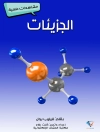As humans evolved from primordial organisms they lost the capacity to make certain essential molecules. By their very absence in specific pathologies and diseases, the thirteen human vitamins were discovered and their crucial role in metabolism revealed.
This textbook provides a thorough chemocentric view on the key small molecules of life, the human vitamins and their active coenzyme forms. Detailing how their unique chemistries control the interconversion and the flux of hundreds of central human metabolites, The Chemical Biology of Human Vitamins examines the parallel and convergent tracks of the vitamins and their coenzyme forms. Analysing the mode of action of each of the vitamins, the book will illuminate the challenges that face each cell; metabolism could not proceed without the chemical functional groups vitamins provide.
Authored by leading educators, this text will serve as an ideal guide and reference point for chemists in both academia and industry, graduates and advanced undergraduate students in biochemistry, chemical biology, metabolism and metabolomics.
Spis treści
Section 1: Overview, A Molecular View of Vitamin Action;
Human Vitamins: Discovery and Characterization;
Metabolic Logic through the Lens of Coenzyme Forms of Human Vitamins;
Section 2: The Metabolic Roles of Water-soluble Vitamins;
Vitamin B1 Converted to the Coenzyme Thiamin Pyrophosphate;
Vitamin B2 Riboflavin;
Vitamin B3 Niacin and the Nicotinamide Coenzymes;
Vitamin B5: Pantothenate;
Coenzyme Forms of Vitamin B6;
Vitamin B7: Biotin;
Vitamin B9: Folic Acid;
Vitamin B12: Two Coenzyme Forms;
Vitamin C: Ascorbic Acid;
Section 3: The Metabolic Roles of Lipid-soluble Vitamins;
Vitamin A: Three Vitamer Forms: Retinol, Retinal, and Retinoic Acid;
Vitamin D;
Vitamin E;
Vitamin K;
Section 4;
Vitamin Chemistry Drives Human Metabolic Logic;
Subject Index
O autorze
Prof Walsh was on the faculty of MIT and Harvard Medical School and is now affiliated with the Ch EM-H Institute at Stanford University. Yi Tang is a professor of Chemical and Biochemical Engineering, and Chemistry at UCLA. Between them they have published many research and review articles that examine the chemical logic that underlies both primary and secondary metabolic pathways. Among their joint efforts is the recent monograph Natural Product Biosynthesis, Chemical Logic and Enzymatic Machinery (Royal Society of Chemistry, 2017).












